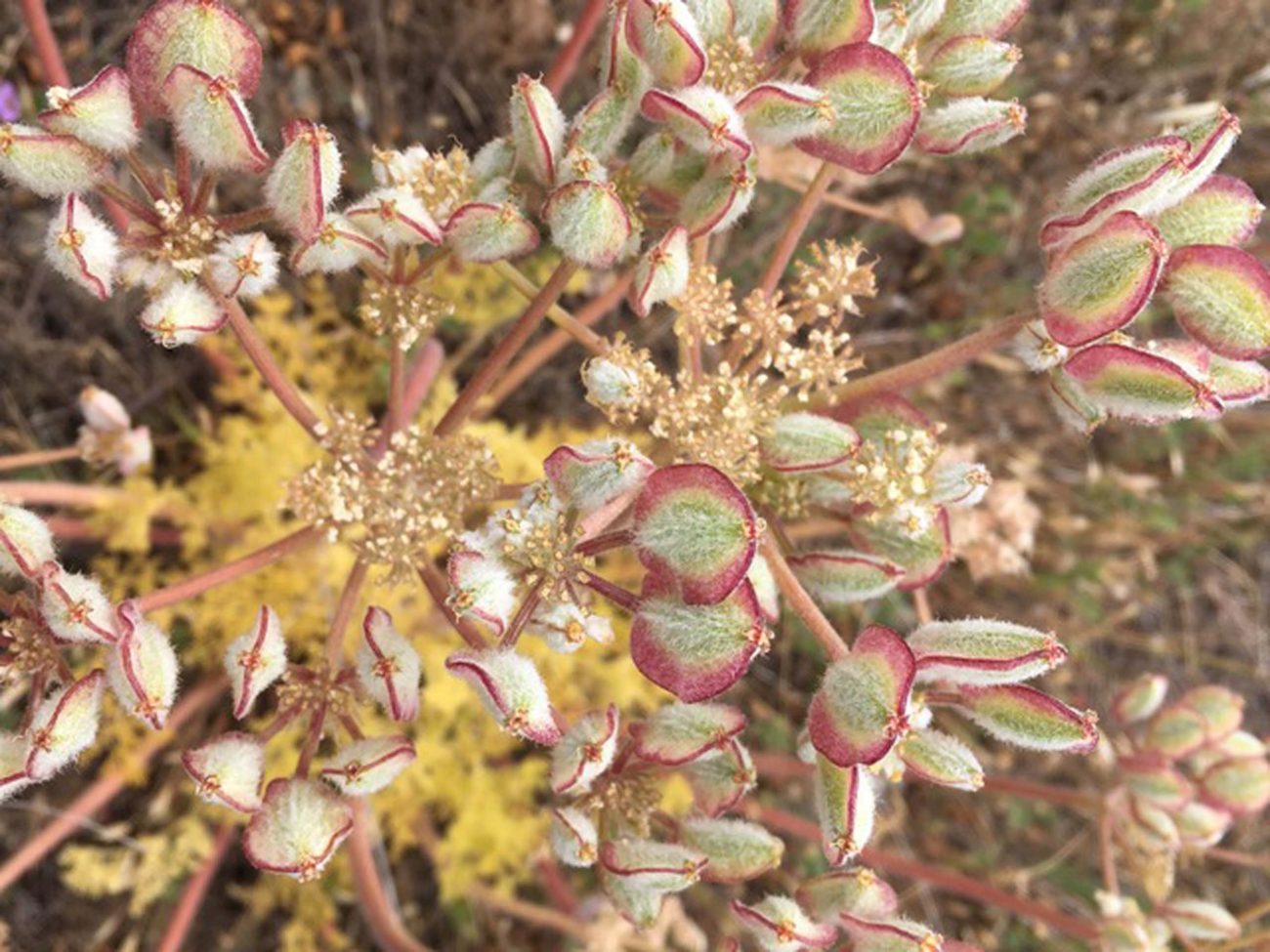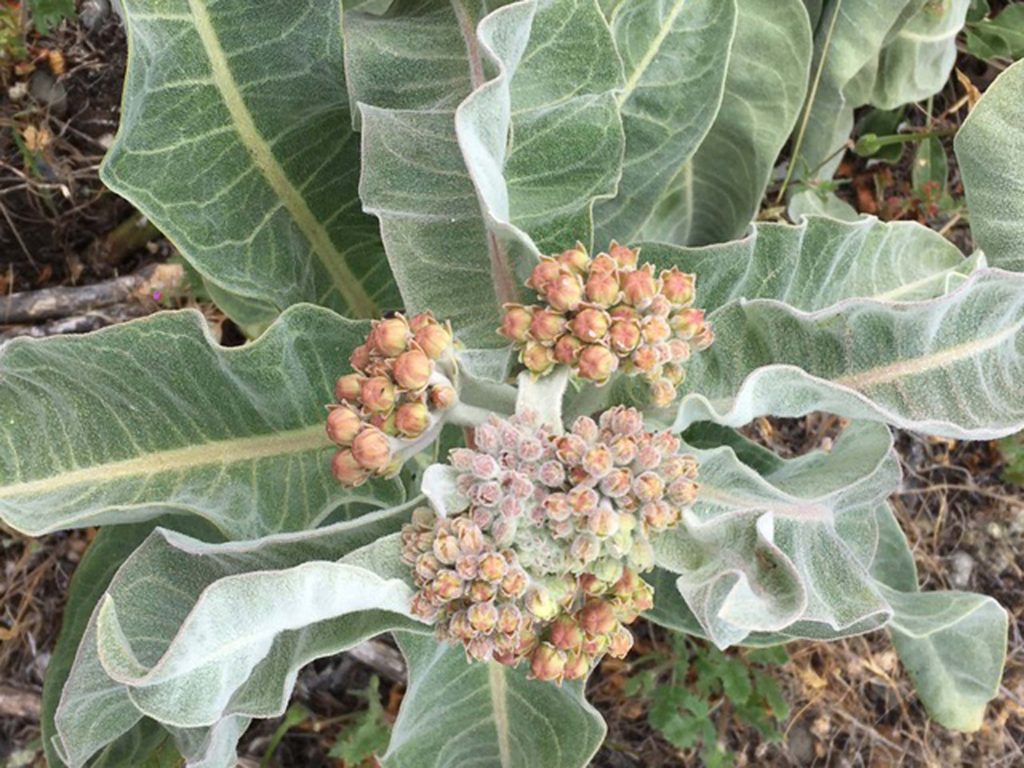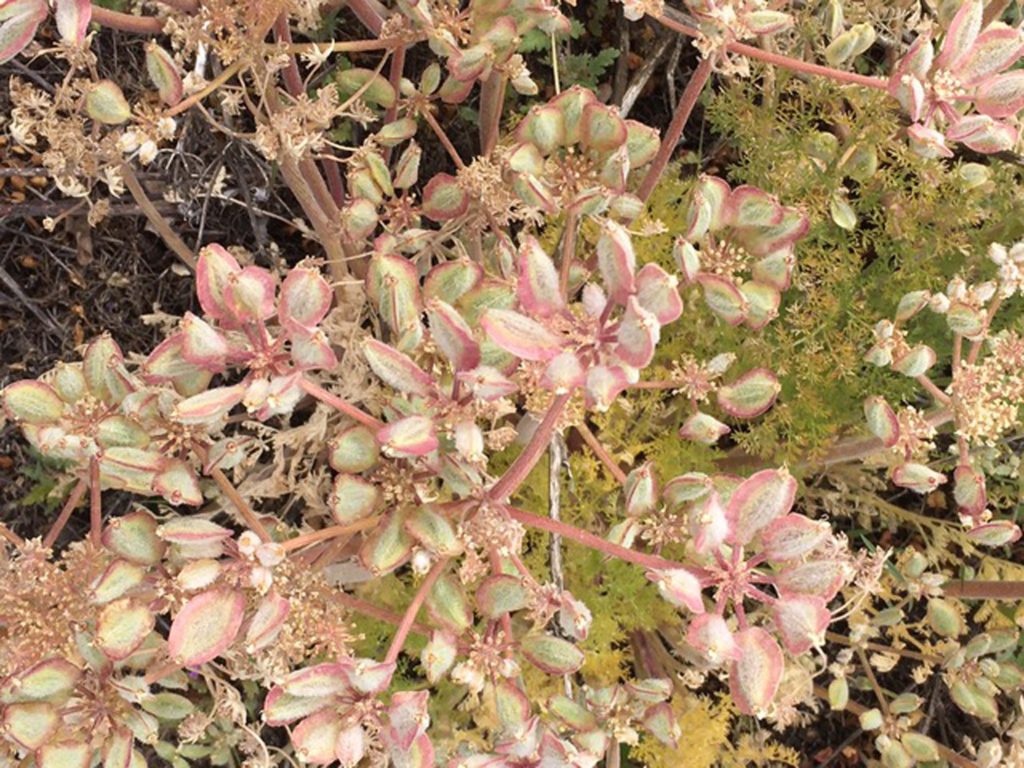
Kotolo, (Asclepias eriocarpa) and woolly fruited lomatium (Lomatium dasycarpum ssp. tomentosum) are both species that Shasta Chapter CNPS offered for the first time at our April 2022 plant sale. Here are photos showing what mature plants look like in early May. It’s good to know what your young plants could look like a couple years from now!
Kotolo blooms earlier than some of the other native milkweeds and provides support for monarch butterflies that arrive first. The young, but already large, kotolo leaves are characteristically fuzzy. Later in the season, the fuzz is not so evident. Mature plants are striking and like convoluted sculptures. As drought-adapted perennials, they will dry down to the ground in fall. New foliage reappears each spring and grows rapidly from energy stored in the plant’s roots during the previous growing season.

I didn’t know woolly fruited lomatium could be so colorful! Also on May 8, I found two separate patches of woolly fruited lomatium that were miles apart that had bright pink edges on the developing fruits and pedicels, while the leaves were becoming golden, below. Lacy white flowers in early March are followed up with a beautiful pink, green, and yellow surprise in May. For photos of early spring flowering, see the article Woolly Fruited Lomatium. ~MaryAnn McCrary

